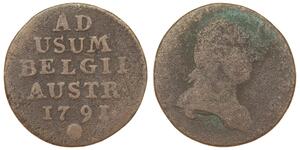(售价 $411.0)
1456, Kingdom of Hungary, Ladislaus V "the Posthumous". Gold Ducat/Gulden Coin. VF-
Mint Year: 1455/1456
Mint Place: Nagybanya (Neustadt)
Ruler: Ladislas V "the Posthumous".
Reference: Friedberg 16, Pohl H28, Huszar 636. R!
Denomination: Gold Ducat / Gold Gulden (Aranyforint)
Mint masters (Kammergrafen): Christophorus & Antonius de Florentia
Condition: Creasing damage, ragged rim (probably a field find), otherwise VF.
Diameter: 21.9mm
Weight: 3.45gm
Material: Gold!
Obverse: Saint Ladislaus I standing facing, holding axe and globus cruciger. Mint initial (n) and privy mark (shield) in fields.
Legend: . S . LADISL - AVS . REX
Reverse: Shield with royal coat of arms of Hungary/Bohemia/Austria/Moravia within circle.
Legend: + LADISLAVS . D . G . VNGARIE
Saint Ladislaus I ( c. 1040 – 29 July 1095) was King of Hungary from 1077 until his death, "who greatly expanded the boundaries of the kingdom and consolidated it internally; no other Hungarian king was so generally beloved by the people". Before his ascension to the throne, he was the main advisor of his brother, Géza I of Hungary, who was fighting against their cousin, King Solomon of Hungary. When his brother died, his followers proclaimed Ladislaus king according to the Hungarian tradition that gave precedence to the eldest member of the royal family to the deceased king's sons. Following a long period of civil wars, he strengthened the royal power in his kingdom by introducing severe legislation. He also could expand his rule over Croatia. After his canonisation, Ladislaus became the model of the chivalrous king in Hungary.
em>. Bidwith confidence!
Ladislas V (Ladislaus the Posthumous) (February 22, 1440 – November 23, 1457) was Duke of Austria from 1440, King of Hungary from 1444 and King of Bohemia from 1453.
The only son of Albert II, King of the Romans and Elisabeth of Bohemia, daughter of the Holy Roman Emperor Sigismund. He was called Ladislaus Postumus (in Czech Ladislav Pohrobek; in Hungarian Utószülött László; in Slovenian Ladislav Posmrtni) because he was born at Komárom (then part of Hungary, now Komárno in Slovakia), four months after his father's death. He succeeded immediately as Duke of Austria and head of the House of Habsburg, and he also became nominal King of Bohemia. But his second cousin Frederick V, ruler of Inner Austria, was chosen to succeed Albert II as King of the Romans.
The estates of Hungary elected Wladyslaw III of Poland as King Ulászló I in succession to Albert II; but the infant Ladislaus' mother had the Hungarian crown stolen from its guardians at Visegrád and brought to Wiener Neustadt by a lady of the court, Helene Kottannerin. According to legend, the cross on the crown is askew because it was damaged in transit as a result. Elisabeth arranged for Ladislaus to be crowned at Székesfehérvár on 15 May 1440.
For safety's sake, she placed Ladislaus under the guardianship of his Habsburg relative Frederick V, who proceeded to hold him as a virtual prisoner in Castle Orth and rule Austria himself. On the death of Ulászló I at the Battle of Varna on 10 November 1444, the Hungarian estates, despite considerable opposition, elected Ladislaus Postumus as their king and sent a deputation to Vienna to induce Frederick to surrender the child and the Holy Crown, which he refused to do. In the meantime, János Hunyadi acted as regent for Ladislaus in Hungary, while George of Podebrady performed the same office in Bohemia.
From 1450 the pressure of the Austrian estates to free Ladislaus grew. In 1452, they entered into the Mailberg Confederation under the leadership of Ulrich of Eyczing and Ulrich of Celje and freed Ladislaus by force. The Princely Count of Celje, a Slovenian magnate and heir to Bosnia, the cousin of Ladislaus' mother, prevailed against Eyczing and became the new guardian of the child, effectively ruling in his stead.
On 28 October 1453, at the age of thirteen, Ladislaus Postumus was finally crowned King of Bohemia, after which he lived mainly in Prague or Vienna. Celje and Ladislaus remained indifferent to the threat posed in Hungary by the Turks, and Celje became increasingly hostile towards János Hunyadi, who was bearing the main burden of the battles against the Ottomans. On the death of Hunyadi, Ladislaus made Celje governor of Hungary in October 1456 at the Diet of Futtak. When, after the Siege of Belgrade, Celje was murdered by László Hunyadi in revenge for his assassination attempt on him on 9 November 1456, Ladislaus had the young Hunyadi beheaded on 16 March 1457. This raised such a storm in Hungary that the king had to flee to Prague, where he spent the last months of his life.
He died suddenly in Prague on 23 November 1457 while preparing for his marriage to Magdalena of Valois, daughter of Charles VII of France. It was rumored at the time that his political opponents in Bohemia had poisoned him; but in the 20th century it was proved that Ladislaus died of leukemia, not a recognized disease in that period.
Ladislaus's cousins Frederick V and Albert VI succeeded him in Austria; Hungary elected Matthias Corvinus, the brother of László Hunyadi, as king; and Bohemia elected George of Podebrady, the only Hussite ruler of that kingdom.
1 Gulden 荷兰王国 銀
本组有 5 钱币 / 5 售价
⇑
1 Liard Austrian Netherlands (1713-1795) 銅
本组有 7 钱币 / 7 售价
⇑

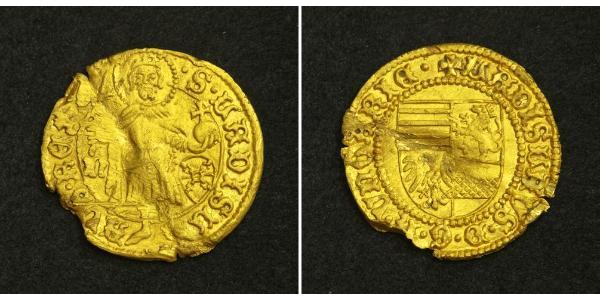





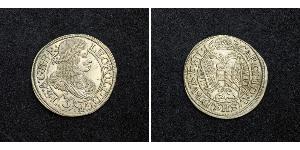

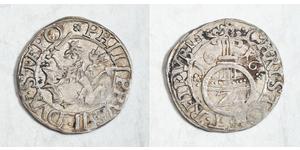




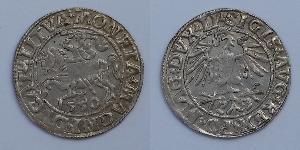

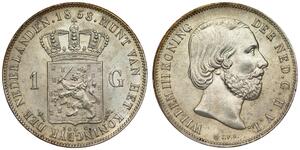
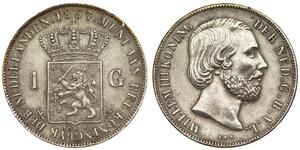
-300-150-NgSsHgTyCiIAAAGW1HxyjNgw.jpg)
